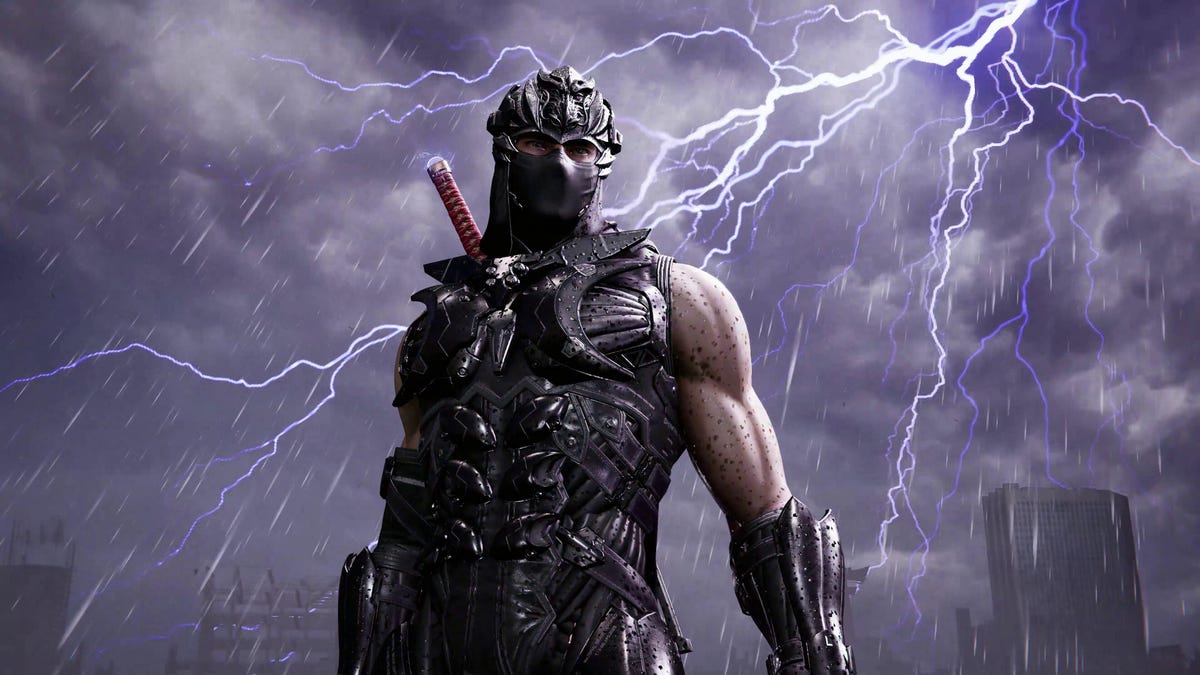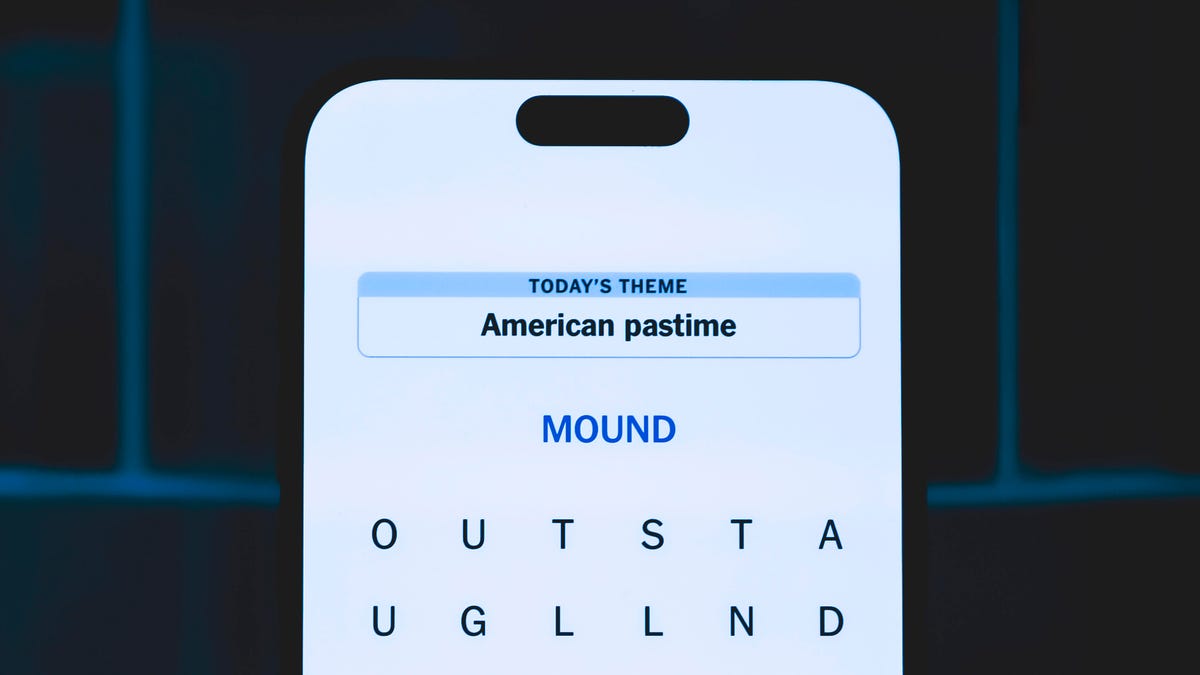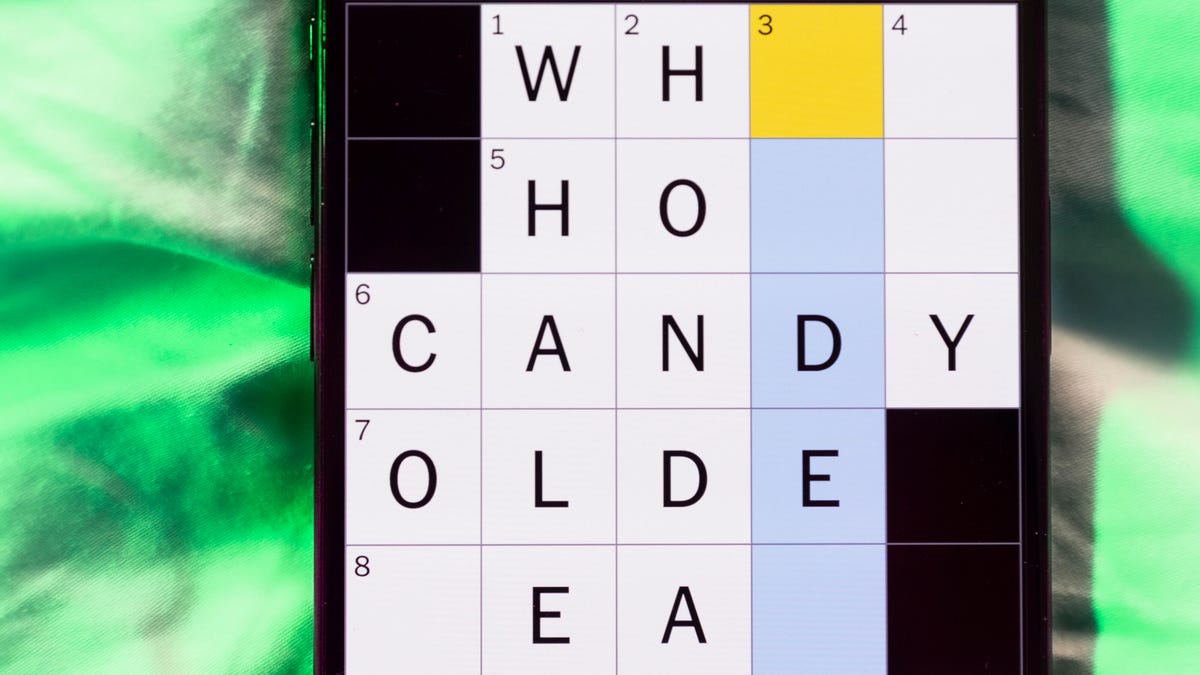Technologies
Ninja Gaiden 4 Review: The Comeback Fans Have Been Waiting For
PlatinumGames and Team Ninja revive the franchise with pure adrenaline.

With 2025 coming to a close, so is the «Year of the Ninja» for video games. What kicked off in a big way with a surprise remaster of 2008’s Ninja Gaiden 2 Black and Assassin’s Creed: Shadows, now ends with the release of Ninja Gaiden 4.
Developed in partnership with longtime series studio Team Ninja and action game specialists PlatinumGames, Ninja Gaiden 4 is the first new 3D entry in the franchise since 2012, following the retro 2D release of Ninja Gaiden: Ragebound in July. As expected from a series known for its fast-paced slashing action, Ninja Gaiden 4 delivers plenty of stylish combat — but not much beyond that.
Ninja Gaiden 4 introduces a new protagonist, Yakumo, who replaces longtime series hero Ryu Hayabusa. It’s a similar move to what publisher Tecmo Koei did with Ninja Gaiden: Ragebound. As part of the Raven clan, a rival of Ryu’s Dragon clan, Yakumo doesn’t differ that much from the series’ previous main character. Don’t worry, Ryu fans: He does show up in the game.
Yakumo’s quest in Ninja Gaiden 4 is to defeat the Dark Dragon, an evil deity who has been the series’ primary villain. Standing in Yakumo’s way is the Divine Dragon Order, which defends the beast and controls the futuristic Tokyo setting of the game.
Does the story make a lot of sense? Not really, except to fans who already know the ins and outs of the Ninja Gaiden lore. Does that matter? Absolutely not, because all you need to know is where to go to slice up more enemies, which Yakumo is stellar at.
Go Ninja Go
To say Ninja Gaiden 4’s action is fast is almost an understatement, which is to be expected. The series was already focused on rapid combat that requires quick reactions, even prior to PlatinumGames’ involvement. The developer took on Ninja Gaiden 4 after revolutionizing the hack-and-slash action game genre with the Bayonetta series and games like Nier: Automata.
If you’ve played plenty of hack-and-slash games, Ninja Gaiden 4’s combat formula will be familiar. Yakumo has weak and heavy attacks, and chaining these together creates your standard combos. The more enemies he defeats, the more money and points he gets to unlock new moves and weapon skills. Some of the new moves extend Yakumo’s combos for longer sequences of attacks and against more enemies, while others are defensive, allowing him to unleash a powerful riposte after parrying an enemy attack.
Yakumo starts off his journey with his twin blades, but he finds more weapons throughout the game. A favorite of mine is the Magashuti staff that has a long reach to attack multiple enemies as Yakumo spins it around himself.
Where Yakumo differs greatly from Ryu is his Bloodraven form. Unleashed when attacking with the left trigger held down, it changes Yakumo’s weapon to do greater damage. The Magashuti, for example, will take the form of a giant hammer whenever Yakumo uses his Bloodraven form. Certain enemies and bosses have armor that can deflect or reduce the power of Yakumo’s attack, so you’ll need to switch to Bloodraven form to break that armor.
All of these mechanics make for unrivaled action. Players who spend enough time practicing will engage in beautiful dances of slashing weapons. The fact is, there are times when the action feels just a bit too fast, even for my veteran gaming reflexes. Trying to maneuver to certain areas or to talk with a non-playable character sometimes had me jumping off walls while hardly touching the controller. It almost takes more work to keep Yakumo still, especially after unlocking so many of his skills. There was also an instance when I did a finishing move to an enemy, and the animation pushed me out of bounds, causing me to have to reload to my last checkpoint.
Arguably, the biggest frustration for me was the lock-on button. It was not intuitive at all, as it had no rhyme or reason for what it was locking onto. Even when I was fighting just the boss, it still never fully locked onto it as every other action game does.
Also, what might be a bit of a downer for some Ninja Gaiden fans, this entry in the franchise is noticeably the easiest of the bunch. Thanks to healing items and equipable accessories, I died maybe once or twice per chapter. If a certain boss kills you too many times, the game will give you free items and even an NPC to help. For those who want more of a challenge, there’s a higher difficulty option available, but players with reasonable skill should be able to coast through the game otherwise.
A Feast for Ninja Eyes
Another mainstay of the Ninja Gaiden franchise is the beautiful visuals. As the game takes place in a futuristic Japan, the development team really leaned into the cyberpunk-like look of a city bathed in neon and glass.
This excels in the moments when Yakumo has to traverse in the most ninja ways, such as sliding on the train rails high above the city or gliding on rushing winds that blow through the mountain pass. These are the moments where you don’t have to worry about enemies attacking or creating the fanciest combos. You can just look around and take in these beautiful graphics.
Combine these visuals with an excellent soundtrack and solid voice acting, and you have a presentation worthy of being included in the Ninja Gaiden series.
Despite these quality elements, Ninja Gaiden 4 is a good reboot but not revolutionary. PlatinumGames resurrected the franchise 13 years after the last main entry, but didn’t take it in any different direction that would give this mass appeal to the gaming public. It’s an exciting 7 to 8 hours to beat, but I didn’t feel like jumping right back in.
Ninja Gaiden 4 will not be up for Game of the Year, or likely even considered one of the best games in the series, but that doesn’t matter. This is a game for anyone who just wants to feel like a badass ninja carving up enemies in the blink of an eye, because sometimes that’s all you want.
Ninja Gaiden 4 will be released on Oct. 21 for $70 on PC, PS5 and Xbox Series X|S consoles. It will be available for Xbox Game Pass on day 1.
Technologies
Today’s NYT Strands Hints, Answers and Help for Dec. 5 #642
Here are hints and answers for the NYT Strands puzzle for Dec. 5, No. 642.

Looking for the most recent Strands answer? Click here for our daily Strands hints, as well as our daily answers and hints for The New York Times Mini Crossword, Wordle, Connections and Connections: Sports Edition puzzles.
Today’s NYT Strands puzzle is a fun one, and the theme is interesting. Some of the answers are difficult to unscramble, so if you need hints and answers, read on.
I go into depth about the rules for Strands in this story.
If you’re looking for today’s Wordle, Connections and Mini Crossword answers, you can visit CNET’s NYT puzzle hints page.
Read more: NYT Connections Turns 1: These Are the 5 Toughest Puzzles So Far
Hint for today’s Strands puzzle
Today’s Strands theme is: Feeling peckish?
If that doesn’t help you, here’s a clue: Can I see a menu?
Clue words to unlock in-game hints
Your goal is to find hidden words that fit the puzzle’s theme. If you’re stuck, find any words you can. Every time you find three words of four letters or more, Strands will reveal one of the theme words. These are the words I used to get those hints but any words of four or more letters that you find will work:
- BAKE, BAKER, BONE, BONES, SIRS, FUNS, FACT, BUTT, DIET, DIETS, GREW, STEW, GOUT, DINE, NEST, NETS, TEAK
Answers for today’s Strands puzzle
These are the answers that tie into the theme. The goal of the puzzle is to find them all, including the spangram, a theme word that reaches from one side of the puzzle to the other. When you have all of them (I originally thought there were always eight but learned that the number can vary), every letter on the board will be used. Here are the nonspangram answers:
- BAKERY, CAFE, BISTRO, BUFFET, BREWERY, STEAKHOUSE
Today’s Strands spangram
Today’s Strands spangram is DININGOUT. To find it, start with the D that is three letters to the right on the top row, and wind down.
Don’t miss any of our unbiased tech content and lab-based reviews. Add CNET as a preferred Google source.
Technologies
Today’s NYT Mini Crossword Answers for Friday, Dec. 5
Here are the answers for The New York Times Mini Crossword for Dec. 5.

Looking for the most recent Mini Crossword answer? Click here for today’s Mini Crossword hints, as well as our daily answers and hints for The New York Times Wordle, Strands, Connections and Connections: Sports Edition puzzles.
Need some help with today’s Mini Crossword? Three of the clues involve a now-infamous Gen Z/Gen Alpha joke, so you might want to have a young person nearby. Read on. And if you could use some hints and guidance for daily solving, check out our Mini Crossword tips.
If you’re looking for today’s Wordle, Connections, Connections: Sports Edition and Strands answers, you can visit CNET’s NYT puzzle hints page.
Read more: Tips and Tricks for Solving The New York Times Mini Crossword
Let’s get to those Mini Crossword clues and answers.
Mini across clues and answers
1A clue: Beaver’s building project
Answer: DAM
4A clue: Unit of distance originally equivalent to 1,000 paces
Answer: MILE
5A clue: Number of dwarfs or deadly sins
Answer: SEVEN
6A clue: Extra-large film format
Answer: IMAX
7A clue: Crosses (out)
Answer: XES
Mini down clues and answers
1D clue: Difficult-to-work-with stars
Answer: DIVAS
2D clue: U.S. soccer star ___ Morgan
Answer: ALEX
3D clue: Roughly half of the adult population
Answer: MEN
4D clue: 5-Down-5-Across, for one
Answer: MEME
5D clue: Broadway musical about the wives of Henry VIII
Answer: SIX
Don’t miss any of our unbiased tech content and lab-based reviews. Add CNET as a preferred Google source.
Technologies
The Mystery of the iPhone 17 Pro’s Missing Night Mode for Portraits
Is it a bug? Is it a technical issue? Or did Apple just yank a camera feature that wasn’t popular?

It’s a mystery. Night mode isn’t available in Portrait Mode on the iPhone 17 Pro, and no one seems to know why. Yet.
Night mode automatically brightens photos and captures more details, even in low-light conditions. You can adjust the exposure time manually. In Portrait mode, the camera focuses sharply on the subject you’re snapping and blurs the background, creating a depth-of-field effect.
The first clue that Night mode for Portrait mode was gone came from an Apple support document titled Take Night mode photos with your iPhone camera. It states what many iPhone aficionados already know: «Night mode automatically brightens photos and captures more detail in low light.»
Don’t miss any of our unbiased tech content and lab-based reviews. Add CNET as a preferred Google source.
Night mode for the iPhone 17 Pro is listed in two separate parts of the iPhone online user guide (here and also here) for selfies and time-lapse photos. But it isn’t included on the guide’s list for snapping Night mode photos in Portrait mode. The feature is still available on iPhone Pro and Pro Max on the 12, 13, 14, 15 and 16 series.
Upon investigation, CNET staffers verified that, indeed, Night mode is no longer an option in Portrait mode with the iPhone 17 Pro.
An Apple representative didn’t immediately respond to a request for comment.
When the iPhone 17 Pro was launched in September, Andrew Lanxon, CNET’s lead photographer in Europe, was impressed by the camera upgrades over the iPhone 16 Pro, including optical zoom that doubled to 8x, a telephoto camera sensor 56% larger than before and 48 megapixels of resolution.
Lanxon, a professional photographer and YouTuber, was excited to get shooting with the iPhone 17 Pro. But apparently, he will have to do without Night mode in Portrait mode.
Why did Apple do it?
Why was Night mode removed? «There doesn’t appear to be a hardware reason for it,» said CNET senior writer Jeff Carlson. «The Lidar camera that helps with low-light focusing and depth perception is still there. Perhaps it’s a software issue, but as of the iOS 26.2 release candidate, the feature isn’t present.»
Carlson found it curious that it’s taken three months since the launch of the new pro model before people noticed that it’s missing. He speculates that the feature was possibly removed because it «wasn’t being used and Apple could devote other processing resources elsewhere,» he said. «Perhaps something broke in the development of the new operating system and revamped Camera app, and it hasn’t been a high enough priority to fix in the regular release schedule.
«People have gotten used to having iPhone models that enable shots that are otherwise difficult for smartphone cameras, especially on a flagship like the iPhone 17 Pro,» Carlson said. «I hope the feature returns to give everyone the most control over the photos they capture.»
One parallel might be what Samsung did earlier this year — removing S Pen Bluetooth connectivity on the new S25 Ultra. Samsung said they removed the feature because not many people were using it. Is Apple doing the same thing with Night mode for portraits?
Some people miss it, some don’t
A subreddit on the topic appeared to be a mix of «who cares» and «oh darn.» Redditor kaoss_pad was «low key happy» that the feature had vanished, saying that «it would often surprise me and activate when I didn’t want it and ruin a moment.»
Some Redditors weren’t even aware of the feature. CultofCedar posted, «lol didn’t even notice that wasn’t a thing,» and Successful-Cover5433 wrote, «I didn’t even know you could.»
A couple of folks weren’t happy about the mysterious disappearance, including nsfdrag, who posted, «Kind of a bummer, I like the feature.»
-

 Technologies3 года ago
Technologies3 года agoTech Companies Need to Be Held Accountable for Security, Experts Say
-

 Technologies3 года ago
Technologies3 года agoBest Handheld Game Console in 2023
-

 Technologies3 года ago
Technologies3 года agoTighten Up Your VR Game With the Best Head Straps for Quest 2
-

 Technologies4 года ago
Technologies4 года agoBlack Friday 2021: The best deals on TVs, headphones, kitchenware, and more
-

 Technologies4 года ago
Technologies4 года agoVerum, Wickr and Threema: next generation secured messengers
-

 Technologies4 года ago
Technologies4 года agoGoogle to require vaccinations as Silicon Valley rethinks return-to-office policies
-

 Technologies4 года ago
Technologies4 года agoOlivia Harlan Dekker for Verum Messenger
-

 Technologies4 года ago
Technologies4 года agoiPhone 13 event: How to watch Apple’s big announcement tomorrow
